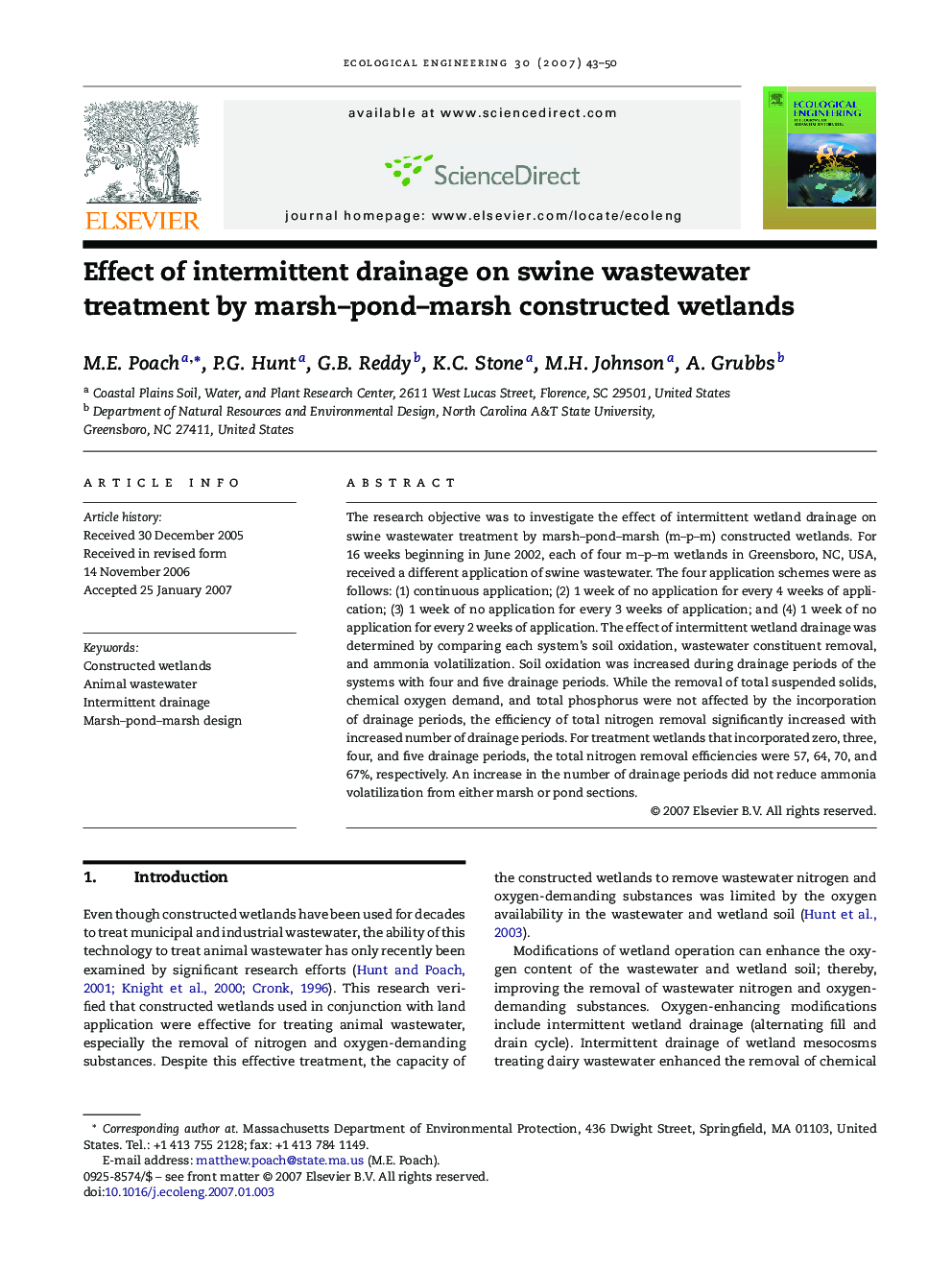| Article ID | Journal | Published Year | Pages | File Type |
|---|---|---|---|---|
| 4391112 | Ecological Engineering | 2007 | 8 Pages |
The research objective was to investigate the effect of intermittent wetland drainage on swine wastewater treatment by marsh–pond–marsh (m–p–m) constructed wetlands. For 16 weeks beginning in June 2002, each of four m–p–m wetlands in Greensboro, NC, USA, received a different application of swine wastewater. The four application schemes were as follows: (1) continuous application; (2) 1 week of no application for every 4 weeks of application; (3) 1 week of no application for every 3 weeks of application; and (4) 1 week of no application for every 2 weeks of application. The effect of intermittent wetland drainage was determined by comparing each system's soil oxidation, wastewater constituent removal, and ammonia volatilization. Soil oxidation was increased during drainage periods of the systems with four and five drainage periods. While the removal of total suspended solids, chemical oxygen demand, and total phosphorus were not affected by the incorporation of drainage periods, the efficiency of total nitrogen removal significantly increased with increased number of drainage periods. For treatment wetlands that incorporated zero, three, four, and five drainage periods, the total nitrogen removal efficiencies were 57, 64, 70, and 67%, respectively. An increase in the number of drainage periods did not reduce ammonia volatilization from either marsh or pond sections.
